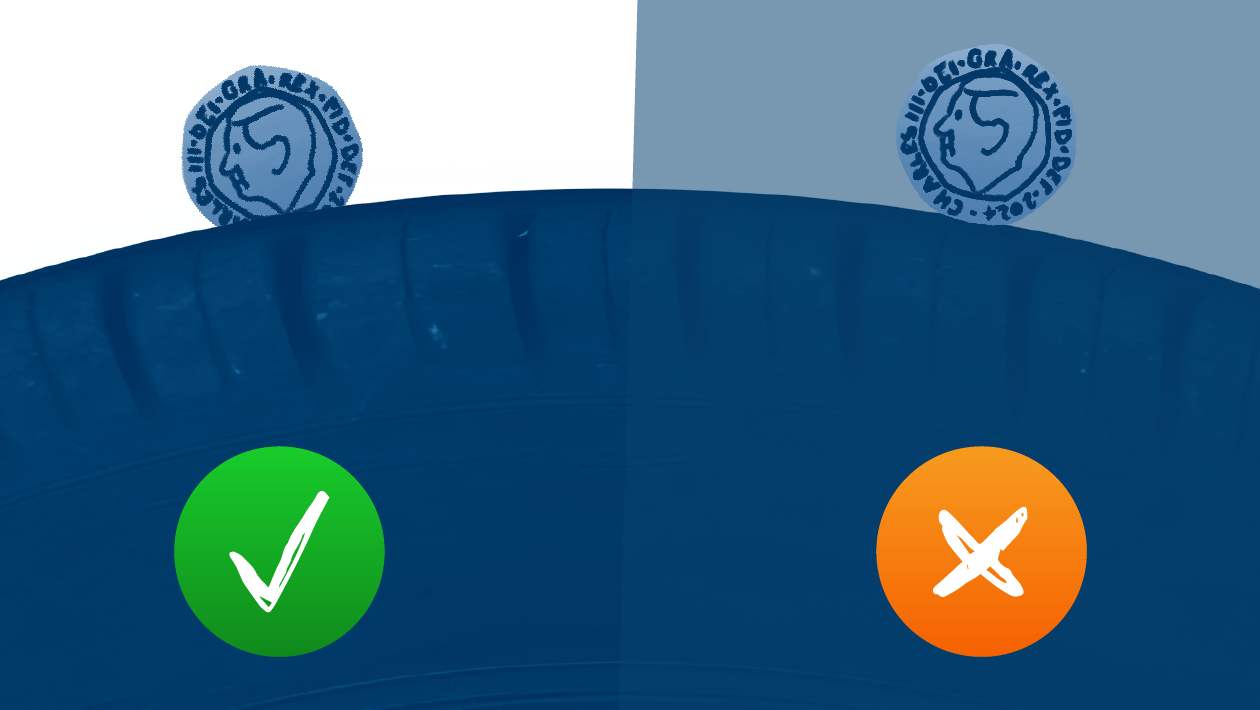Checking your tyre tread regularly is vital for ensuring your safety on the road.
When your tyres wear out, this can increase the risk of your car being involved in an accident – especially if you aquaplane in wet weather.
Not to worry - you can check your tyre tread at home by following the steps in this blog.
Page Contents
How Do You Check Tyre Tread?
Did you know that you could be charged £2,500 - per tyre - and incur 3 penalty points for driving a car with bald tyres?
Not to mention that bald tyres are one of the most common reasons for MOT failure.
That’s why it’s so important that you check your tyre tread regularly.
You won’t need any tools to inspect your tyre tread – bar a tread depth gauge - so you can easily check with a quick visual inspection.
The steps involved in checking your tyre tread are as follows:
- Perform a visual inspection
- Look for signs of tread wear
- Use a tread depth gauge
You can perform a visual inspection of the tyres and carry out the 20p test to check the tyre tread of your car’s wheels.
Alternatively, if your tyres have tyre tread wear indicators embossed on the tyre sidewall – with a line or an arrow somewhere below the outer tread – you can check if the tyre is flush with these.
You could also use a tyre tread depth gauge to measure the depth of an individual tyre groove.
How Do You Check Tyre Tread with a 20p Coin?
You can check your tyre tread depth by using a 20p coin, which is a handy option if your tyres don’t have tread wear indicators.
You should carry out this test approximately every 2 weeks, and before long drives.

Simply take a 20p coin and insert it into the main tread grooves of your tyre, with the Queen’s head facing down.
Be sure to place the coin in the main tread channels of your tyres several times, at various intervals around the tyre.
If the outer band of the coin – which measures approximately 2.7mm wide - is obscured by the tread, then your tyre has sufficient tread depth.
If you can see the outer band, then you need to replace the tyre immediately.
What Is Tyre Tread Depth?
The grooves on your tyres are known as tyre tread.
These grooves help to remove water from the road so that your vehicle can maintain a grip on the road’s surface.
When your tyres have the appropriate level of tread depth, this can have several benefits:
- Improved stopping distances
- Improved aquaplaning resistance
- Improved traction
- Improved handling
- Prolonged tyre lifespan
- Enhanced fuel efficiency
Not to mention that having suitable tyre tread can help you to comply with the necessary legal requirements for tyres.
What Is the Legal Minimum Tyre Tread Depth (UK)?
In the UK, the legal minimum tyre tread depth for cars and light commercial vehicles is 1.6mm across the central three-quarters of the tread width and around the entire circumference.
You must replace your tyres once they reach this limit to comply with the law.
Not to mention that your tyres are the only point of contact between your vehicle and the road – so you must replace them when needed to stay safe whilst driving!
Though 1.6mm is the legal minimum for tyre tread depth in the UK, we would strongly advise you to replace your tyres once they reach a tread depth of 3mm.
What Are Some Signs of Tyre Tread Wear?
Be aware of the following signs of tyre tread wear so that you can book a timely tyre replacement:
- Vibrations in the steering wheel
- Uneven tread wear
- Smooth patches of tyre tread
- Cracking or bulging in the tyre sidewall
- Reduced traction
- Reduced handling
Some tyre manufacturers use tread wear indicators (TWIs) in their products.
These visible markers are set below the level of the original 8mm tyre tread.
As the tyre tread wears away over time, the tread depth will eventually reduce to be level with the TWI – signalling that the tyre needs to be replaced.
FAQs
How Much Tread Is on a New Tyre?
What Causes Tyre Tread Wear?
What Happens If You Have an Accident on Illegal Tyres?
How Long Does It Take Tyre Tread to Wear Down?






